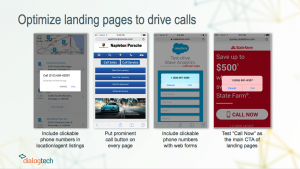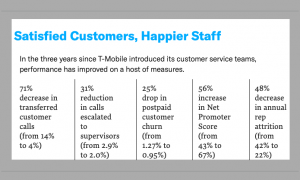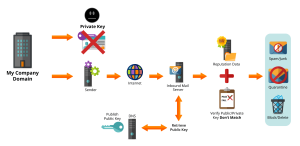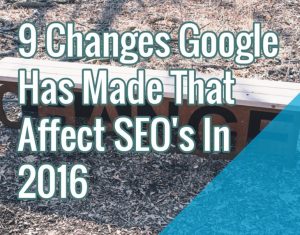AI and customer journey orchestration can take your existing marketing automation approaches to the next level.
Marketing automation is a foundational component of marketing technology stacks. However, using it alone isn’t enough to stay ahead, as customers expect a seamless experience with your brand, regardless of the channel.
There are ways to use additional solutions, notably artificial intelligence and journey orchestration, to take your existing marketing automation approaches to the next level.
Challenges with legacy marketing automation
Marketers have achieved amazing results with marketing automation in the past. But customers’ shifting expectations and behaviors are pushing traditional approaches to their limits. Brands that rely on marketing automation alone find engaging with active customers on multiple channels difficult.
Personalization in most marketing automation platforms (MAPs) is limited to simple rules-based instructions (“if this, then that”). For example, if a customer abandons their shopping cart, send them a reminder email. Or, if a customer signed up for an email list, send them a welcome message.
This approach doesn’t allow for complex variations based on the segment a customer might be in, their propensity to buy, their past individual behavior, or other factors. While some MAPs can technically achieve this, building all rule sets can make ongoing management nearly impossible and fraught with errors based on cascading dependencies.
As customers demand more dynamic experiences, your marketing automation approach must be augmented. This is where customer journey orchestration and artificial intelligence (AI) come in.
How journey orchestration augments marketing automation
Traditional marketing automation can still work well in providing timely and relevant communications when dealing with a single response channel such as email. But your customers don’t rely on a single channel to interact. Instead, they are channel-switching and expect brands to keep up.
Additionally, most marketing automation workflows are generally simple and rarely incorporate complex branching, particularly across multiple channels.
This is where customer journey orchestration (CJO) can save the day. CJO was built for multi-channel communication. Thus, emails, SMS messages, mobile app push notifications, website landing pages and social advertising can be hyper-targeted.
Through branching, a series of actions can result in vast differences for one customer versus another, even if they are enrolled in the same journey.
This way, CJO boosts your marketing automation, aligning with your customers’ growing expectations about receiving content, offers and experiences when, where and how they want them.
The impact of AI on marketing automation
Since most marketing automation relies on a simpler, rules-based approach, AI plays a key role in augmenting these decisions in coordination with or separate from customer journey orchestration.
Below are some ways AI can take your marketing efforts beyond your current marketing automation methods.
Dynamic segmentation
Finding patterns in vast amounts of structured and unstructured data is cumbersome for humans. AI, on the other hand, can do this well. AI-based machine learning algorithms help you glean audience insights, turning formerly static audience segments into more dynamic ones.
These dynamic segments can group customers based on buying patterns or behavior that enable personalized content, offers and experiences to reach the right person at the right time on the right channel. That’s marketing gold.
Propensity calculation and predictive analytics
Adding AI capabilities can significantly enhance your performance if your MAP uses fairly simple if/then logic to send messages and take action. You can use propensity scoring and predictive analytics to route the next best action or offer to an individual.
Personalized content generation
The promise of generative AI tools is that content, including text and imagery, can be tailored on a one-to-one basis for the individual rather than everyone in a large audience segment receiving the same thing.
While there are hurdles to be overcome in this area, truly personalized content and images can lead to greater relevance, loyalty and lifetime value.
What needs to change to be successful
To successfully augment marketing automation with customer journey orchestration and AI, marketers must remember these three impactful points.
Personalized journeys
Ensure your approach is customer-centric. Consider the experience an individual may want versus a one-size-fits-all approach that lumps many customers into the same buckets.
While a segmented approach is better than sending the same message on the same channel to everyone, it still doesn’t individualize the timing, channel, content and offers nearly enough to meet rising consumer expectations.
Integrations
Better integrations can have a positive impact when using journey orchestration and AI to augment your marketing automation.
Platform integrations
To take advantage of a true multi-channel customer journey orchestration approach, you will need to integrate several platforms in ways they most likely have not been integrated. Fortunately, because this is a core functionality of CJO tools, this can be straightforward in most instances. But, as with any integration, there can always be unexpected hitches.
A common way to start is to use an iterative approach that builds toward an omnichannel setup, one system and platform integration at a time. This makes it easier and quicker to implement the first integration, letting your teams learn more quickly to become more efficient and produce effective results as time progresses.
Data integrations
Platform integrations will also require your data sources to be more unified. You must ensure you are:
- Reaching the right customer on their platform of choice.
- Informed by the relevant purchase and behavioral data across multiple internal systems and platforms.
- Augmented by other demographic or psychographic information that may be beneficial.
As you may well know, integrating all these data sources can be daunting for even the most sophisticated organizations.
Team integrations
Just as platforms and data can be siloed, your marketing teams can often be just as disconnected. Your email marketing team needs to coordinate with your mobile app team and SMS team and so forth throughout the organization.
Doing CJO well and using AI to the fullest means that teams work together from the initial campaign and content creation to the measurement and optimization of your collective efforts.
Omnichannel approach
Finally, it is time to evolve your customer experience approach toward omnichannel and customer-centric instead of reactive and marketing-driven. Customer journey orchestration was built to be multichannel, and AI applications thrive in processing structured and unstructured data sources.
Improving upon your marketing automation means keeping these approaches in mind as you find more effective ways to provide tailored customer experiences.
Conclusion
Using customer journey orchestration and artificial intelligence-based approaches to augment your current marketing automation efforts can dramatically impact your ability to deliver valuable experiences for your customers and your brand.
The post Using AI and journey orchestration to boost your marketing automation appeared first on MarTech.
MarTech(2)








